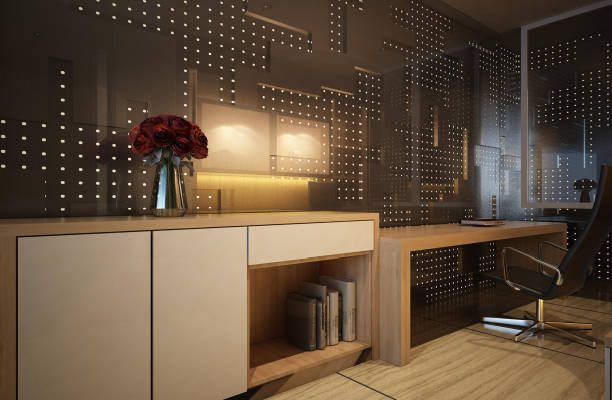Outdoor lighting that is typically put on the outside facing walls of buildings is referred to as LED wall pack fixtures, wall pack lights, or outside building lights. This sort of outdoor lighting is typically used to illuminate ground areas that are frequently visited by automobiles and pedestrians. They can also provide an extra degree of security for property owners. Multiple lamps set on a single structure or wall are not unusual, with fixture spacing designed to provide equal lighting around the grounds. Therefore, LED wall pack fixtures are used.
What are LED lights?
This solid-state type of lighting employs a semiconductor diode that glows when voltage is supplied and is short for a “light-emitting diode.” This sort of illumination, which dates back to the 1960s, has been used in electronic and computer equipment. However, as LED technology has evolved, it now outperforms practically all other commercially available lighting solutions.
LED-wall pack fixtures vs traditional lighting fixtures
Due to their low profile and great light output, wall pack lighting fixtures have been a popular choice for commercial and industrial customers around the world for many years.
Due to their tremendous light output, these fixtures usually employ HID or high-pressure sodium bulbs. LED technology, on the other hand, has advanced to the point where it currently dominates this category of lighting, with significantly improved efficiency, service life, and overall light quality. Due to advancements in technology, users have now been able to save a significant amount of money on operating and maintenance costs, as well as increase workplace safety and decrease liability concerns with LED wall pack fixtures.
Sodium vapor lights: low-pressure sodium lights produce a monochromatic, deep yellow light, and high-pressure sodium lights produce a little whiter (but still yellow) light.
Fluorescent lighting: In warehouse and industrial applications, fluorescent lighting is occasionally used. Fluorescent lights have the advantages of lower startup costs and reasonably high efficiency (especially when compared to other conventional bulbs).
Benefits of using LED lighting technology
It’s no secret that LED lighting technology has outperformed traditional lighting in several ways. The following are broad benefits of LED lighting that apply to all lighting applications:
Maintenance requirements are reduced.
LED lights have a four-to-forty times longer lifespan than traditional bulbs. This means fewer bulbs will need to be replaced as they wear out. LED lighting differs from traditional fuel and filament lighting in that it employs a diode instead of a filament to generate light. As a result, there are fewer moving parts to break and, as a result, fewer repairs or replacements are required. When it comes to industrial or warehouse lighting, maintenance is very critical. Because wall pack lighting frequently has higher mounting heights, changing a bulb necessitates the use of a ladder and, in some circumstances, specialized hydraulic lifts. All of this adds up in terms of equipment, labor, and maintenance expenditures. Because of the long life of industrial LED lighting, fixtures need to be replaced significantly less frequently, resulting in cost savings.
Increased energy efficiency.
LED lights not only produce light differently, but they also disperse light differently than traditional lighting options, requiring less energy to produce the same output. What’s the deal with that? To begin with, many traditional lights squander a large portion of the energy they produce by releasing heat (this is especially the case with metal halide lighting). Second, most traditional lights are omnidirectional, meaning that light is emitted in all directions. As a result, a lot of light is wasted or diluted because it needs to be redirected through the use of fixtures. For installations requiring wall pack lights, industrial LED lighting overcomes these two wasteful energy issues (through heat loss and omnidirectional emission).
Improved lighting quality using LED wall pack fixtures.
When it comes to color rendering index (CRI), correlated color temperature (CCT), and foot candles, LED wall pack fixtures often outperform most conventional bulbs in a head-to-head comparison. When compared to an ideal light source, CRI is a measurement of a light’s ability to display the true color of objects (natural light). Foot candles are a measure of efficiency that compares the amount of light coming from a source to the amount of light hitting the desired surface. LED lights perform admirably on all three fronts.
What is the best way to convert my existing wall packs to LEDs?
Depending on how the present lighting system is configured, there are several options for retrofitting LEDs into it. In many circumstances, lighting specialists find that replacing the complete unit with a new LED fixture that gives the proper lumen output is the easiest and smoothest option for transitioning to LEDs. In some cases, it may be essential to reconfigure an entire lighting system layout to make the move to LEDs, as LEDs’ very high lumen output frequently necessitates a smaller number of lights to learn more about LED wall packs or purchase them, please visit our website Lepro.




















